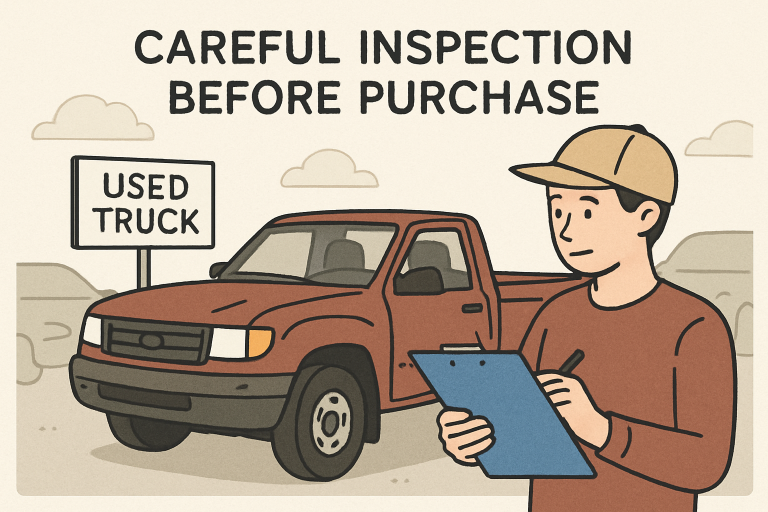
Smart Ways to Shop for Used Trucks: What Every Buyer Should Know
Key Takeaways
- Buying a used truck requires research, patience, and understanding of your needs.
- Knowing the history and condition of a truck can help avoid costly surprises later.
- Essential steps include setting a budget, inspecting vehicles thoroughly, and leveraging vehicle history reports.
- Negotiation and post-purchase maintenance are crucial for getting long-term value.
Why Consider a Used Truck?
Shopping for a used truck can be one of the savviest moves you make as a buyer. Choosing a pre-owned vehicle prevents the steep depreciation that hits new trucks when driven off the lot. According to Edmunds, used vehicles hold their value better over time, leaving more money in your pocket and often enabling you to afford higher trims or extra features.
Real-life buyers regularly attest to finding quality trucks with low mileage and excellent features at a fraction of the original cost. For those searching in Oklahoma, you’ll discover a competitive and diverse market of reliable used work trucks available in Tulsa, where inventory includes popular makes and configurations to meet your needs for work or personal use.
Setting Your Budget and Priorities
The smartest truck shoppers begin with a clear sense of their financial limits and must-have features. It’s not just about the sticker price—success means accounting for insurance, taxes, licensing, and any repairs or upgrades you might want immediately or down the line.
- Define your core needs: Are you towing, commuting, or tackling off-road adventures?
- Choose essential features: Four-wheel drive, specific bed sizes, or advanced tech might top your list.
- Preserve a portion of your budget for routine maintenance or unexpected repairs.
Prioritizing helps filter down your search and keeps you focused while browsing, so you avoid distractions from flashy add-ons that may not add value to your lifestyle or work needs.
Inspection Checklist for Used Trucks
An in-person inspection is a crucial part of the truck-buying journey, and it is highly advised to bring along a trusted mechanic. A detailed walkaround should cover more than just cosmetic details; check for evidence of corrosion, past repairs, and mechanical health.
- Exterior: Scrutinize for rust, dents, or mismatched paint—possible accident or flood damage.
- Frame: Probe the undercarriage for damage or serious corrosion that could affect structural integrity.
- Engine: Look for leaks, examine the oil, and listen for irregular noises on a cold start.
- Test Drive: Assess brakes, transmission, steering, and acceleration for smooth, responsive operation.
- Interior: Check all electronics, displays, AC, and seat adjusters for full functionality.
A thorough inspection costs extra time upfront but pays off in reliability and confidence, helping you avoid thousands of unexpected repairs.

Understanding Truck History Reports
Reviewing a used truck’s history report is non-negotiable. Trusted platforms provide critical insights into prior accidents, service records, mileage discrepancies, and ownership changes. Vehicles with regular service, a clean accident record, and few previous owners are more likely to offer reliable, long-term service. Additionally, experts agree that used trucks with transparent, well-documented histories typically experience fewer major repairs and better resale value.
Key Features to Look For
Choosing the right features ensures you get maximum utility as your needs evolve. While each driver demands unique capabilities, these options consistently provide outstanding value:
- Strong towing and payload capacities if you’ll haul heavy loads
- Four-wheel drive is essential for snowy, wet, or off-road environments
- Advanced safety systems like backup cameras or blind-spot alerts
- Modern entertainment and navigation options
- Comfort touches, including adjustable seating, dual-zone climate, and cab space
Seek trucks with these features to make your vehicle adaptable, comfortable, and ready for anything your work or family throws at you.
Negotiation Tips for a Fair Deal
Entering negotiations with research gives you the upper hand. Know the average market price for the specific age, mileage, and condition of the trucks you’re interested in. Gather quotes from multiple dealerships or private sellers and use them as leverage. Remain polite but assertive—set a ceiling for your final price and be willing to walk away if it isn’t met.
Remember, the timing of your purchase can also affect the price. Dealers are often more flexible at the end of the month or during periods of slow sales, so plan your negotiations for when incentives may be offered.
Common Mistakes to Avoid
Experienced truck buyers and dealers point out a handful of errors that can turn your bargain deal into a money pit:
- Skipping the all-important vehicle history report
- Obsessing over price at the expense of long-term value
- Neglecting repairs and ongoing maintenance in your budget
- Failing to get a professional mechanic’s inspection
- Making a decision based on urgency or pressure from a seller
Avoiding these pitfalls safeguards your investment and leads to long-term ownership satisfaction.
After-Purchase Maintenance and Tips
Buying your truck is only the beginning. Schedule a thorough maintenance check immediately and address any fluid changes or basic repairs. Prioritize regular oil changes and inspections, and follow the maintenance schedule outlined in your owner’s manual to extend the life of your truck. Building a relationship with a local mechanic can improve service and peace of mind. Staying proactive with care will keep your used truck running smoothly, whether you’re headed to the job site or planning a weekend adventure.


Average Rating